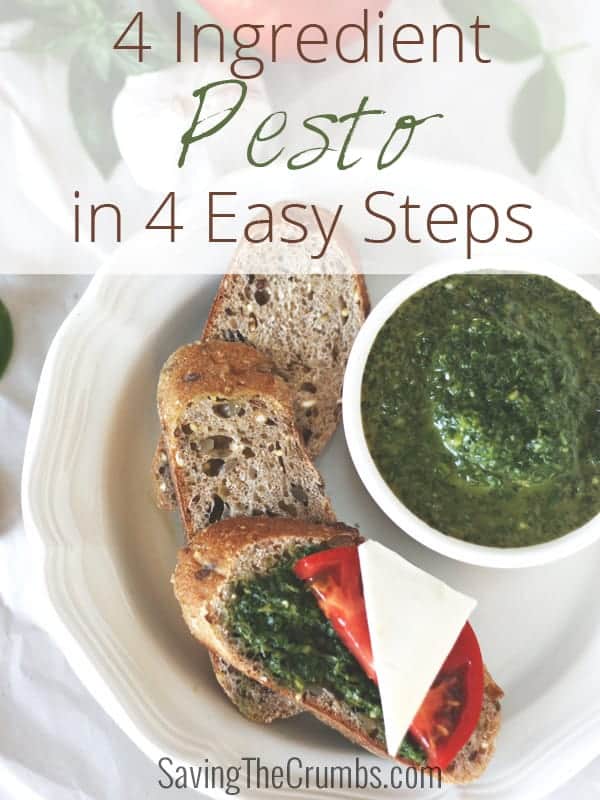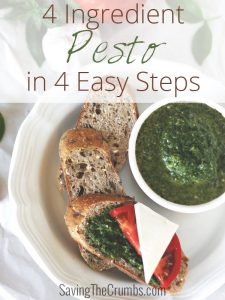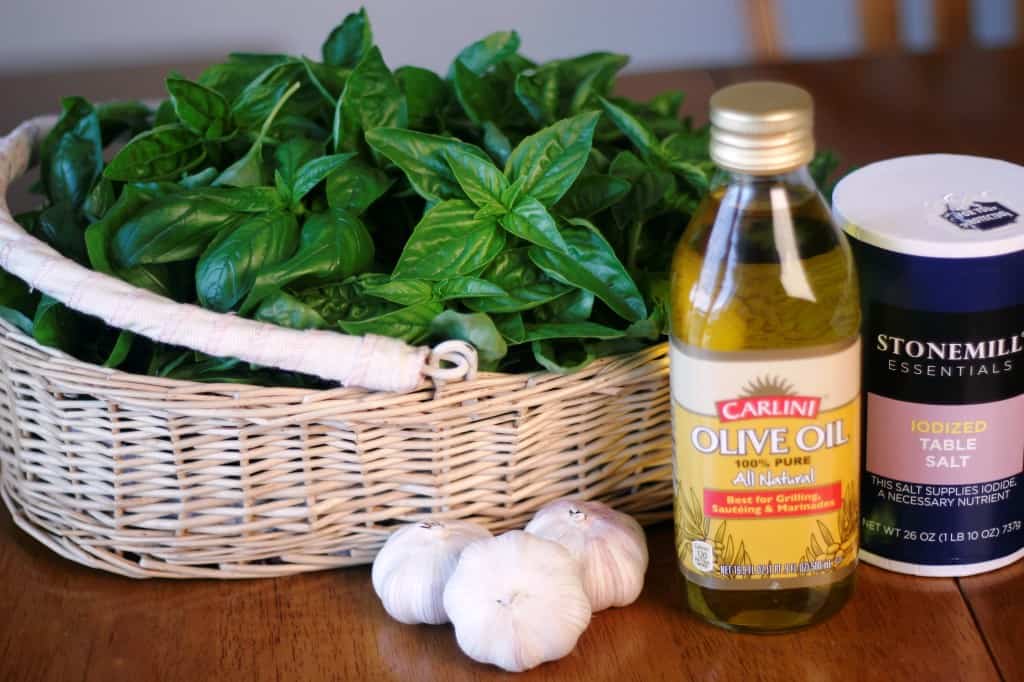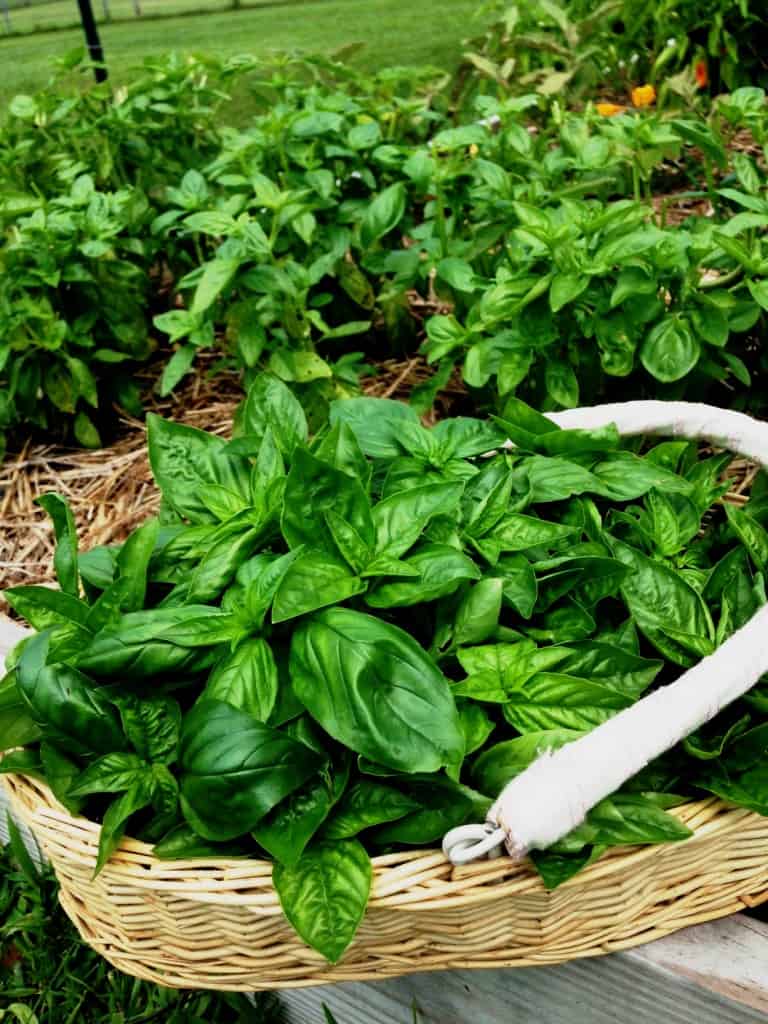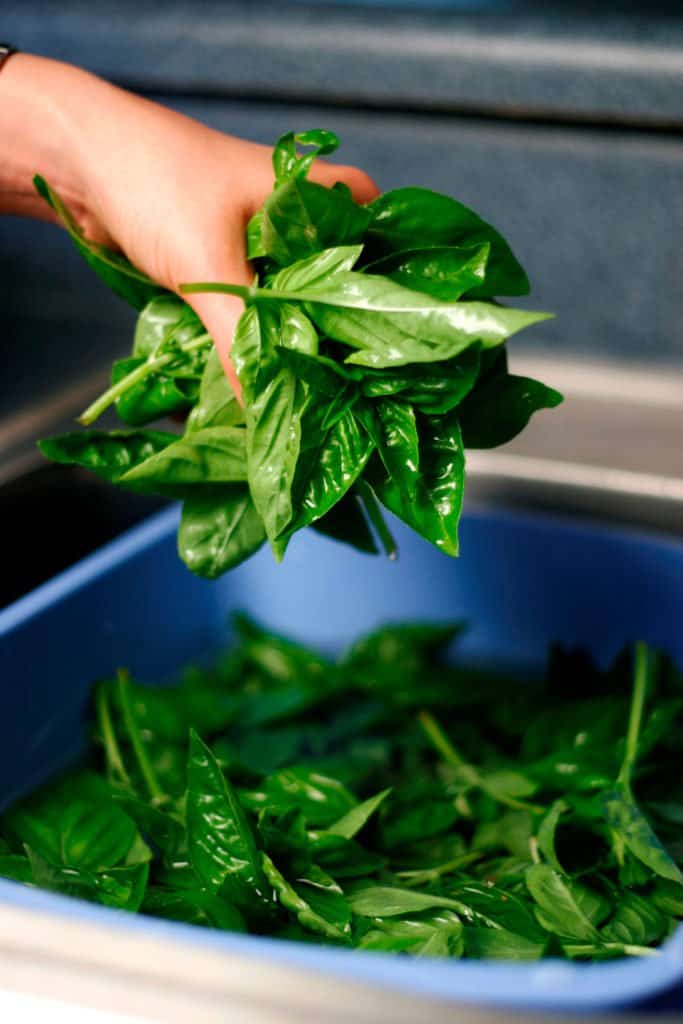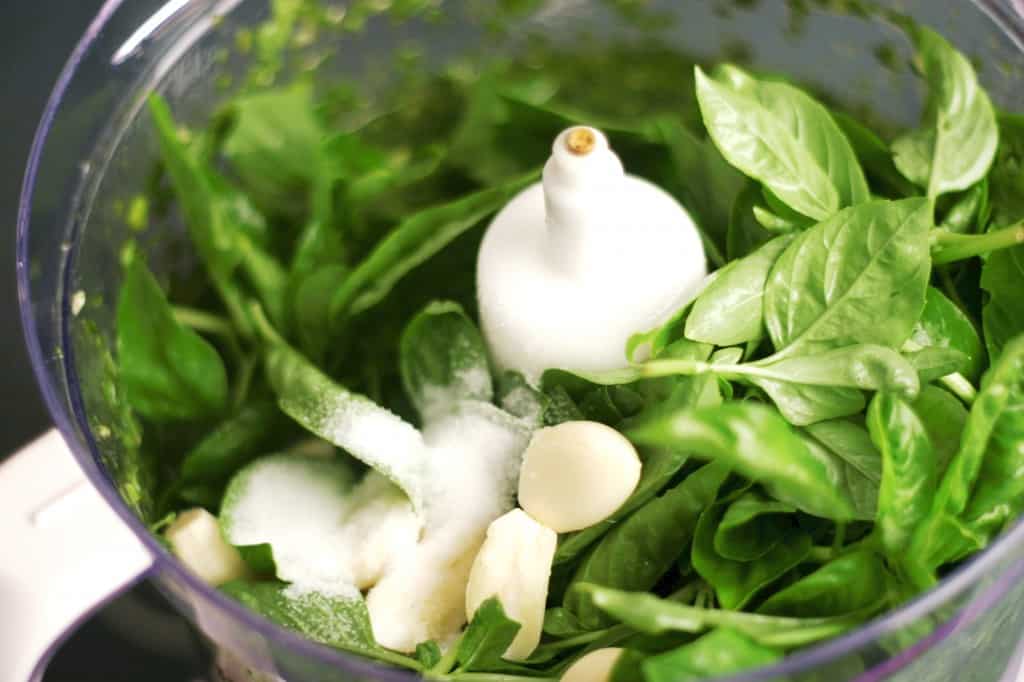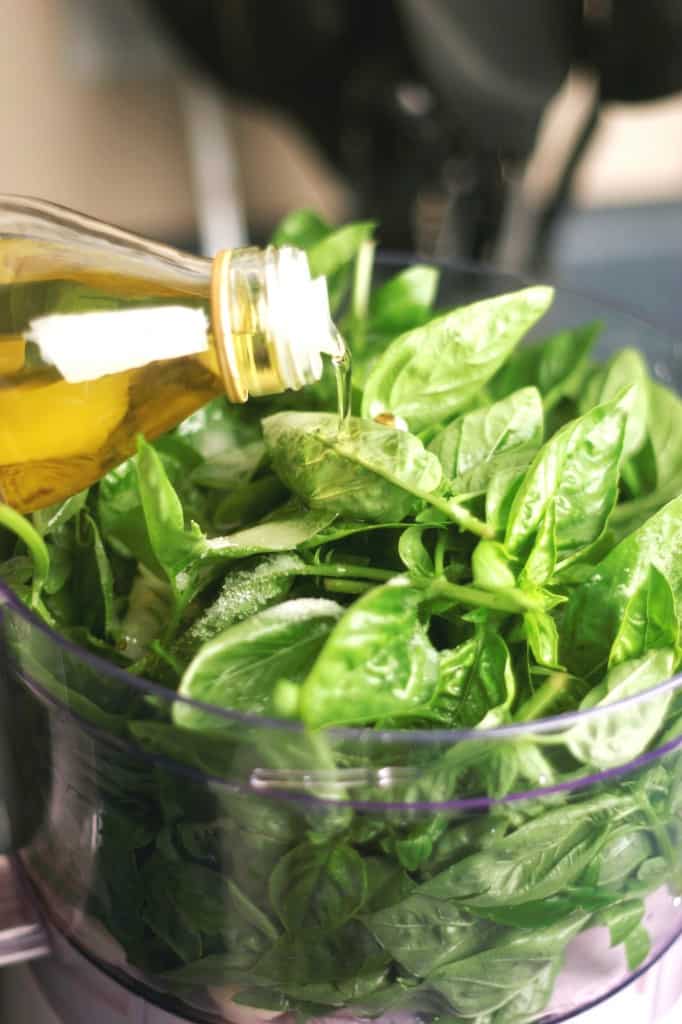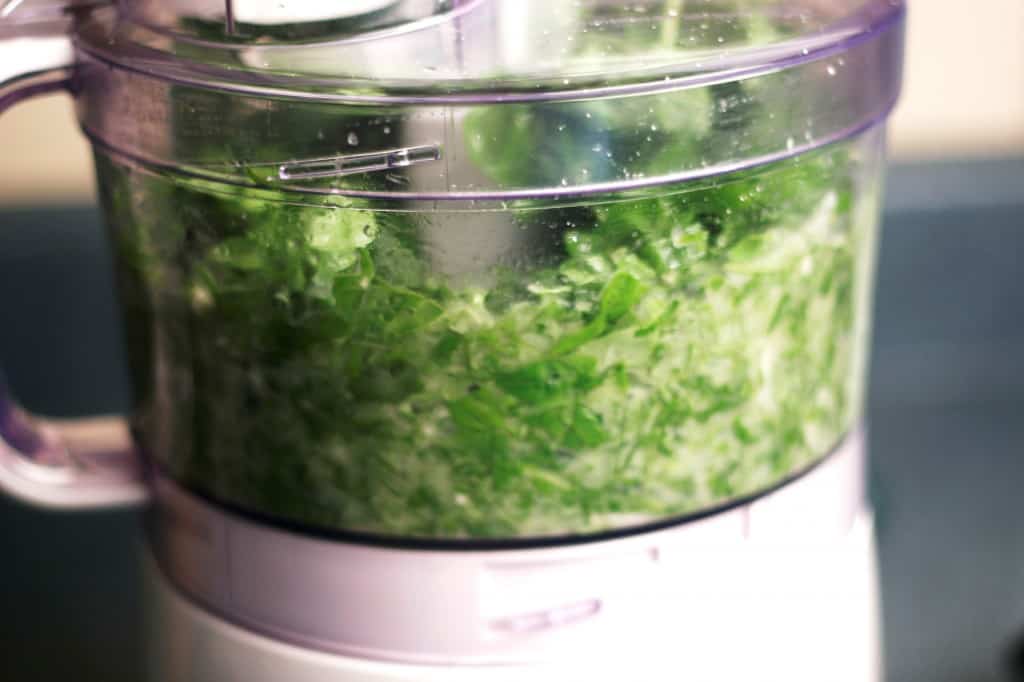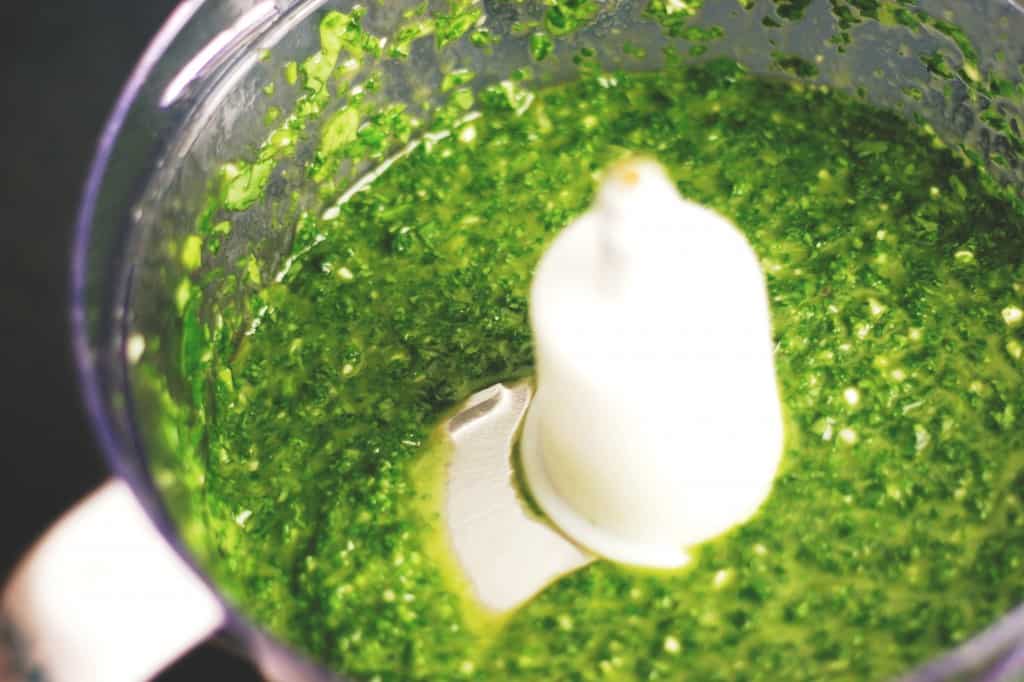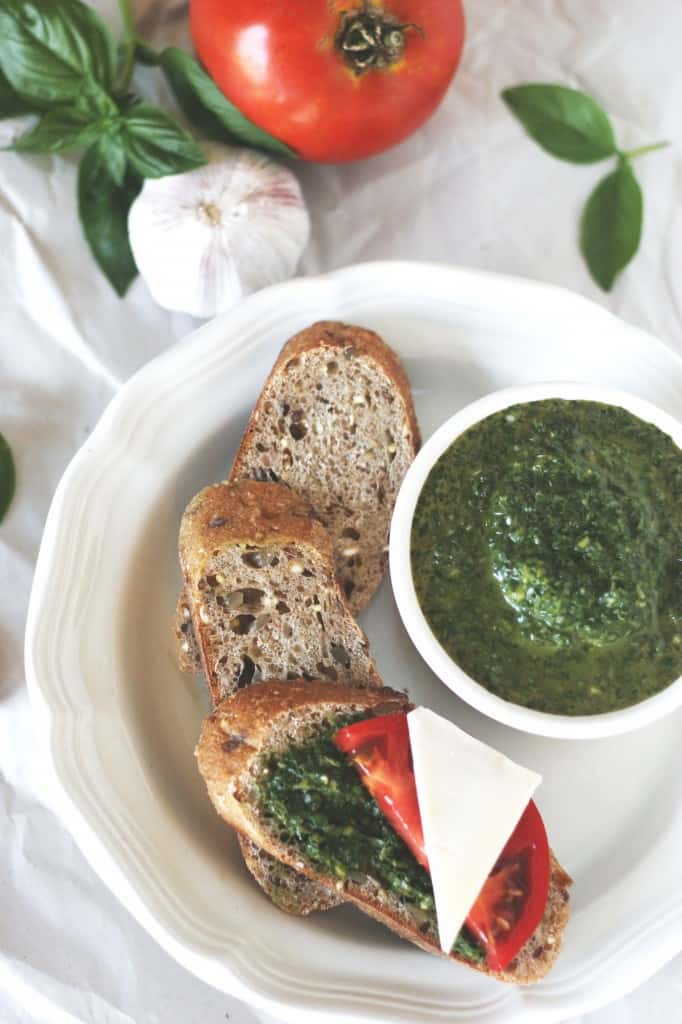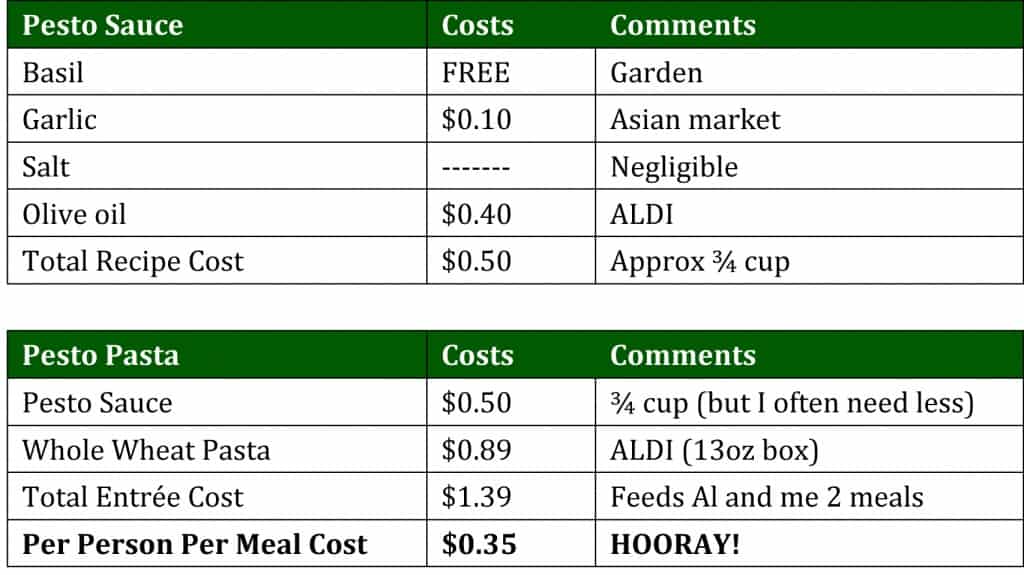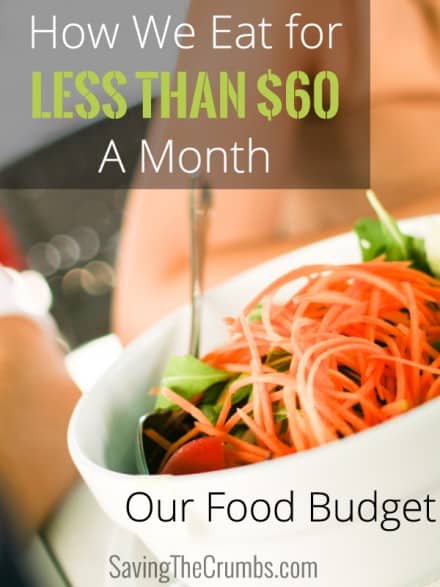This year, Al and I grew 5 basil plants in our planter boxes. They’ve been growing so well in this hot Tennessee summer, that we’ve been having a hard time keeping up with them!
We love the strong, punchy flavor of basil, but the only ways we know how to use up large quantities at a time are by making bruschetta (oh, heavenly!) and pesto (for my all-time favorite pasta). So, with our basil plants producing more than the 2 of us can eat, we’ve found that the best way to preserve it is by making pesto and freezing it. Not only is it just as delicious when we pull it out of the freezer in the middle of winter, but I can use up tons of fresh basil during the summer with just a quick whiz in the food processor.
If you read our previous posts on how we eat for an average of less than $60/month, you understand why this recipe is slimmed down to 4 simple ingredients. Of course, you could always add other things to spice it up (like pine nuts, walnuts, pepper, or cheese), so consider this your foundational pesto base with lots of room for variations. Personally, I don’t mind it so simple when I’ve found this recipe to meet all my requirements: fast, cheap, and oh my, so delicious!
Yup, this is all you need!
Ready to whip up your own? Here are your 4 easy steps.
1. Pick Your Basil
Have you ever tried to buy a jar of pesto in the supermarket? Yikes, it’s expensive! And so are a few leaves of fresh basil from the produce section. But if you grow your own basil, this gourmet dish suddenly costs pennies…literally!
Basil doesn’t keep well, so make sure you pick it fresh. Basil also produces more as you pick it (once the tops start going to seed it produces less). We pick about this much every 2 weeks from our 5 fairly small plants.
When you’re picking, don’t be afraid to include the stems. The extremely tough ones should be left out, but as long as you can easily snap the stem off with your fingers, you can include it into your pesto.
You will need about 3 cups of fresh basil to make one recipe of pesto (which serves about 4).
2. Peel Your Garlic
However many cups of basil you have, you will need double the number of cloves of garlic. Feel free to put more or less depending on how garlicky you like it. We usually get our garlic from ALDI, but I had a lot of garlic from our recent shopping spree at the Asian store where it was extremely cheap. If you don’t have fresh garlic, you can use granulated or pre-chopped garlic, but your pesto won’t have quite the punch of garlicky flavor to it (on a positive note, neither will your breath!).
Your garlic is going to be all blended up into the pesto, so don’t worry about it looking pretty. I learned from my mom that an easy way to get the peels off is to lay the flat side of the knife on the clove and give it a good smack with the heel of my hand. Not only does it help start the yummy garlic juices to come out, but the skin peels right off!
3. Add Everything to the Food Processor
While I’m peeling the garlic, my basil is usually soaking in some water to be washed. Don’t soak it too long! If you let it sit in water for over 10 minutes or so (depending on how fresh your basil is), it can start to get black.
The ingredient amounts in this recipe are EXTREMELY forgiving, so I don’t usually measure anything except the salt. I grab a handful of basil and imagine how much I would be able to stuff in a 1 cup measuring cup. Maybe about this much (plus or minus 3-4 stems)?
After you’ve put in your basil (I usually put in 6 cups, blend it, and then put in another 6 cups for a total of 4 recipes), add the peeled garlic and salt. I like to put it on top of the basil to make sure it gets evenly dispersed.
Last in is the olive oil, probably your most expensive ingredient. We get ours from ALDI where a 16.9oz bottle is $2.59. The original recipe I adapted mine from said to use 1 cup of olive oil for every 3 cups of basil. I usually end up using 1/4 or less of that and it has plenty enough oil for me. In addition, when I make pesto in these quantities, I am usually making a pesto sauce “concentrate” to be frozen. It if doesn’t have enough oil or salt, those can be adjusted when I unfreeze it and mix it into my pasta. However, it’s usually pretty close for our liking.
4. Blend It Up!
Now, just put on the lid and whiz it up! I do have a Vita-Mix, but I prefer a food processor for pesto so it doesn’t turn into green pesto juice. I like to see the tiny pieces of basil leaves stuck to my noodles. Hey, we grew the basil, I want to be able to recognize it! I usually end up blending it on high for 10 seconds or so.
Here’s the finished product! Let’s just say that the moment you open the lid, a waft of this super dynamic trio of aromatic basil, pungent garlic, and smooth olive oil makes you drool immediately.
Now you can either freeze it for a gourmet dinner this winter, mix it with some angel hair pasta for today’s lunch, or take a big dollop and spread it on crusty bread with a slice of tomato and vegan cheese.
But whatever you do, you can revel in the fact that you are eating healthfully, simply, deliciously, and saving money while doing it!
Below we have outlined the approximate costs of making your own pesto. Of course, the costs will vary depending on if you grow your own basil, how inexpensively you can buy your other ingredients, and how much olive oil you end up using (since that is your most expensive ingredient). Here’s how it turns out for us:
Ingredients
- 3 cups fresh basil
- 6 cloves fresh garlic
- 1 teaspoon salt
- 1/4 -1/3 cup olive oil (depends on how oily/runny you like it, I usually use 1/4 or less)
Instructions
- Blend all ingredients in food processor on high for approx 10 seconds.
Notes
1 recipe is usually enough for a 13 oz box of pasta.
Try it on artisan bread for an exotic sandwich.
Freezes beautifully! Freeze in small plastic containers or in an ice cube tray to make it easier to dethaw smaller portions.
Optional: Blend in 1/4 walnuts or sprinkle with pine nuts for texture. Top pasta with nutritional yeast or vegan parmesan cheese.

